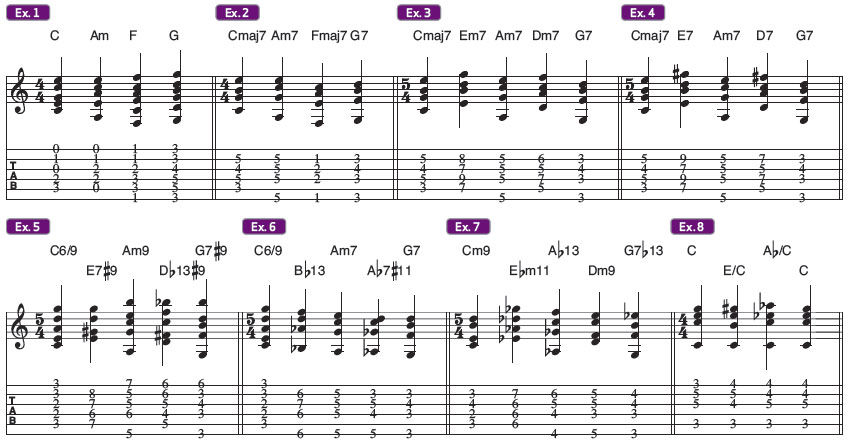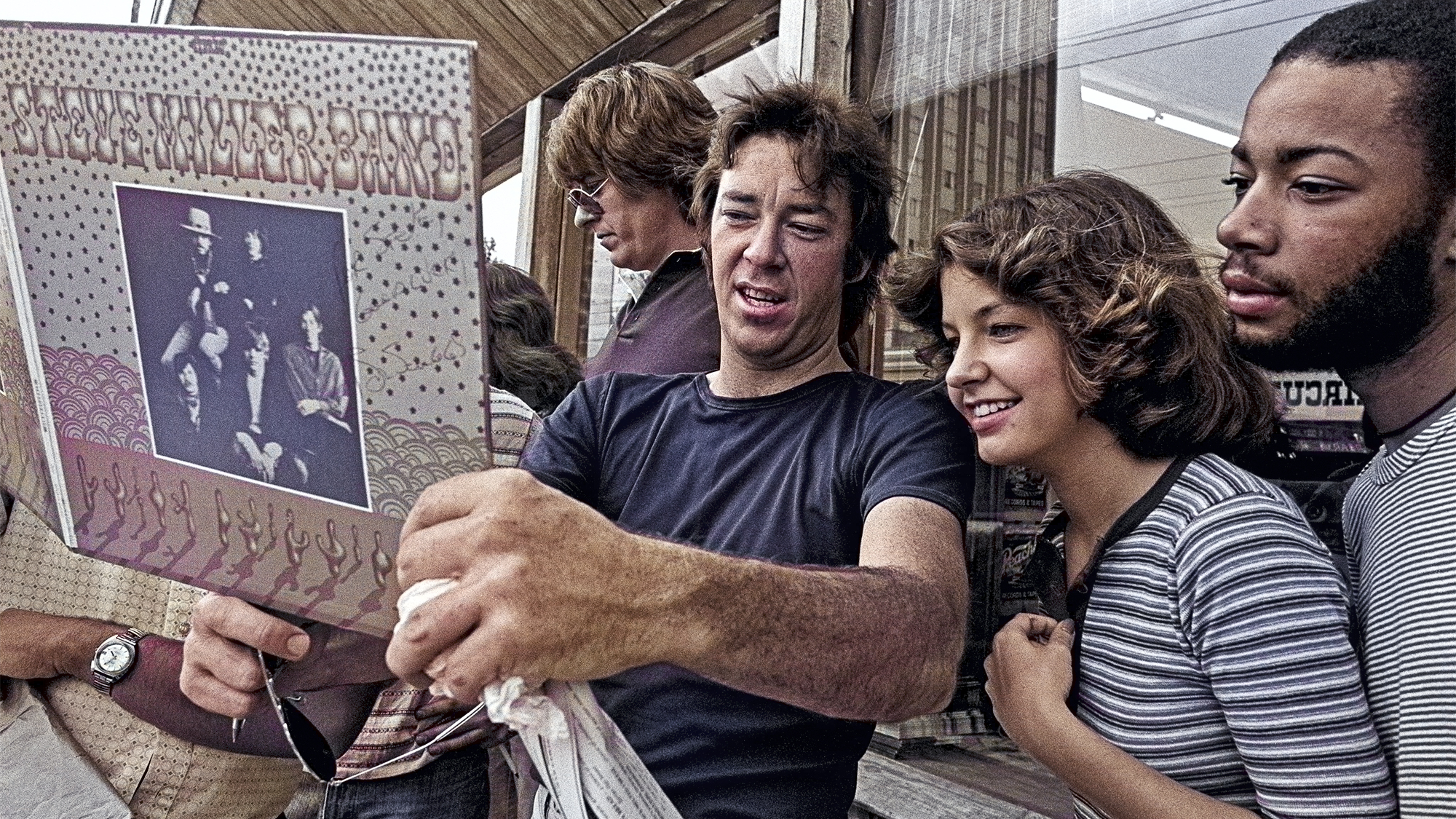Bored of Using the Same Old Chords? Here’s One of the Hippest Ways to Spice up a Progression
Turn stock rock chords into sweet jazz changes with reharmonization

The following is a classic GP lesson from jazz guitar master Jake Hertzog's column, Hey Jazz Guy.
Hey Jazz Guy,
How can I turn my cool rock chords into some sweet jazz changes? – Rockstar in Reno
Dear Rockstar,
Reharmonization is one of the hippest ways to alter a chord progression. Let’s take some chords and follow their transition from pop rock to über-jazz.
We will start with a progression using basic guitar voicings [Ex. 1]. The next thing to do is add 7ths to each chord [Ex. 2]. Then, substitute chords based on the cycle of 4ths [Ex. 3].
We’re in 5/4 now to make room for the changes. In this case we will sub Dm7 for F and slip in an Em7 before Am7. This creates a cycle of 4ths progression in the bass (E, A, D, G). At this point we want to break the tonality of C major, [Ex. 4] by turning some of the minor chords into dominants (E7, D7).
All the latest guitar news, interviews, lessons, reviews, deals and more, direct to your inbox!

Now for the really fun part, adding the tensions. If we just take a sample off the spice rack [Ex. 5] (season to taste), we get some cool altered tensions (#9, b13) on the dominants, and lovely 9ths and 6ths on the major and minors.
Now we have a jazzy sounding chord sequence, but we can go further by substituting the tri-tone subs [Ex. 6] for E7 and D7 using Bb13 and Ab7(#11) instead.
II-V progressions can resolve down a half-step, in the same way dominants can, so next we can treat the IIm-V as if it were one dominant chord using Ebm7 and Ab7 to lead to Dm9 [Ex 7].
To go off the deep end, we also have some Coltrane triads over a pedal tone [Ex. 8].
There are infinite ways to reharmonize, but these ideas should give you a rocking place to start.
Jazz hard!
